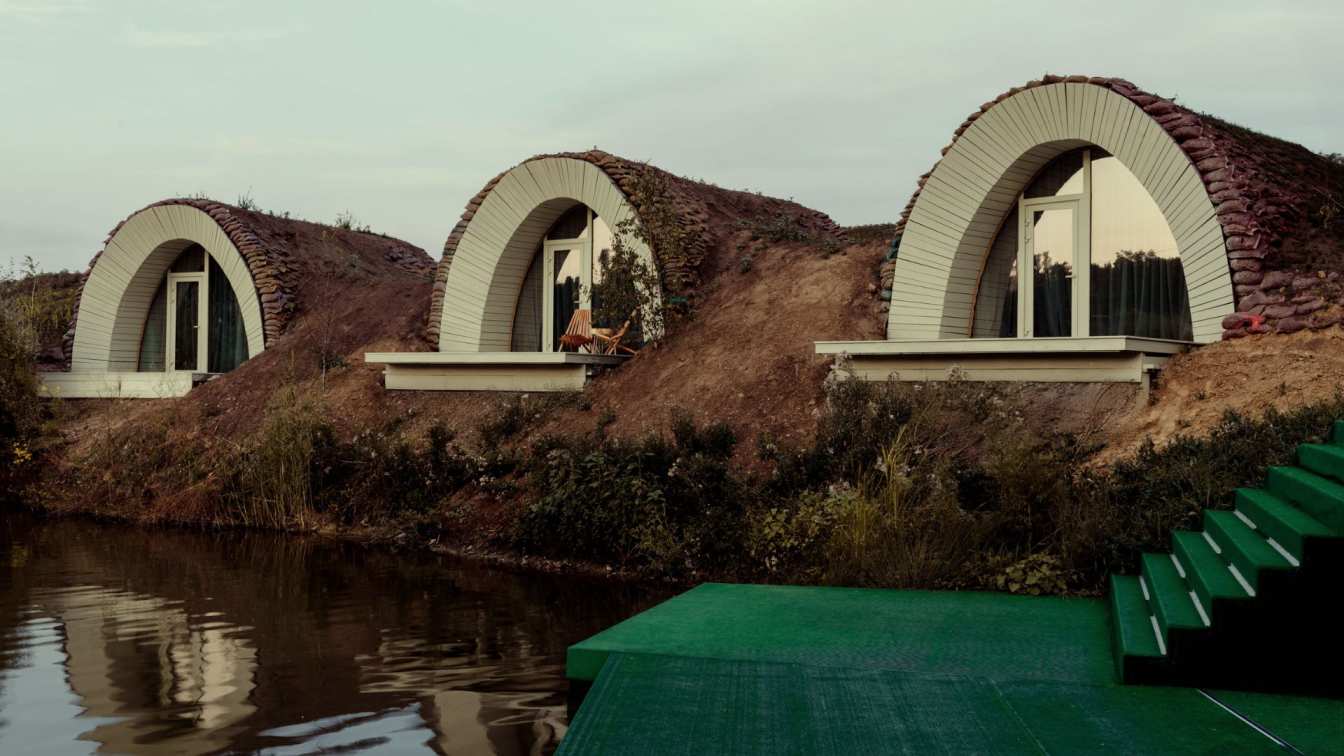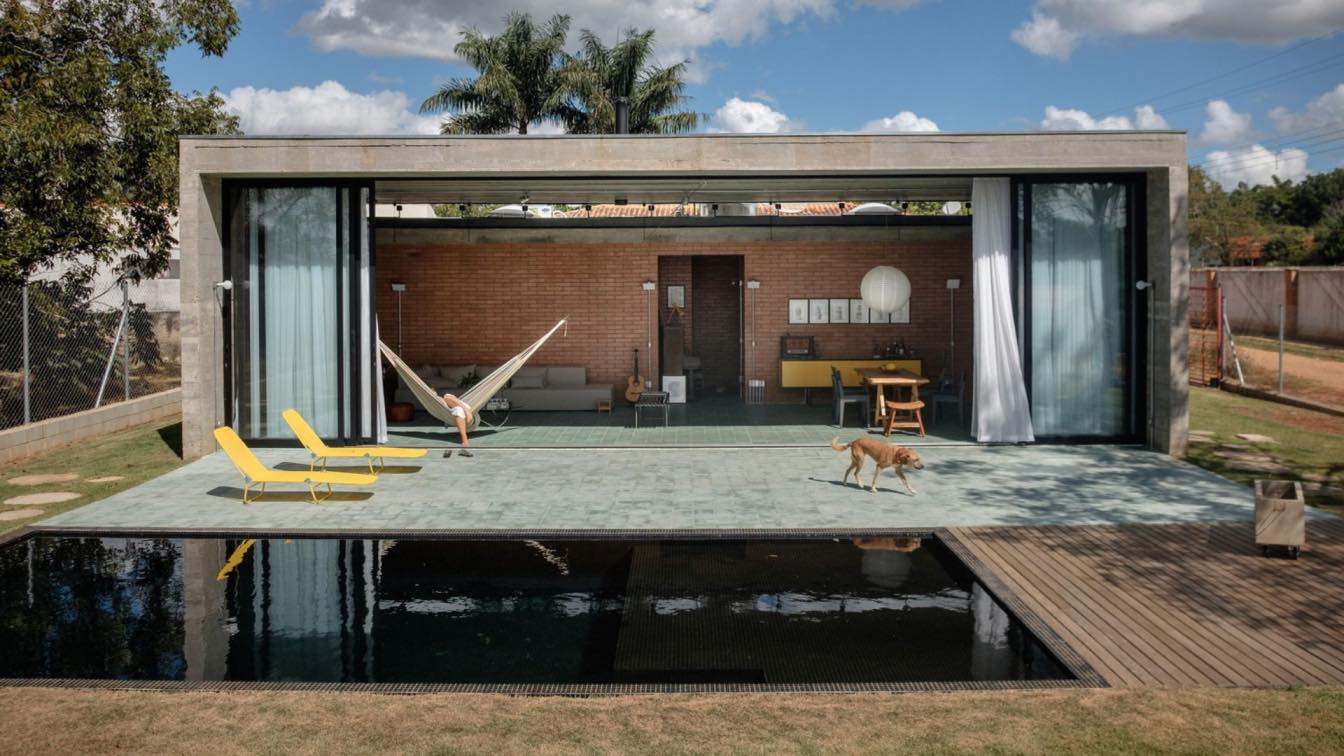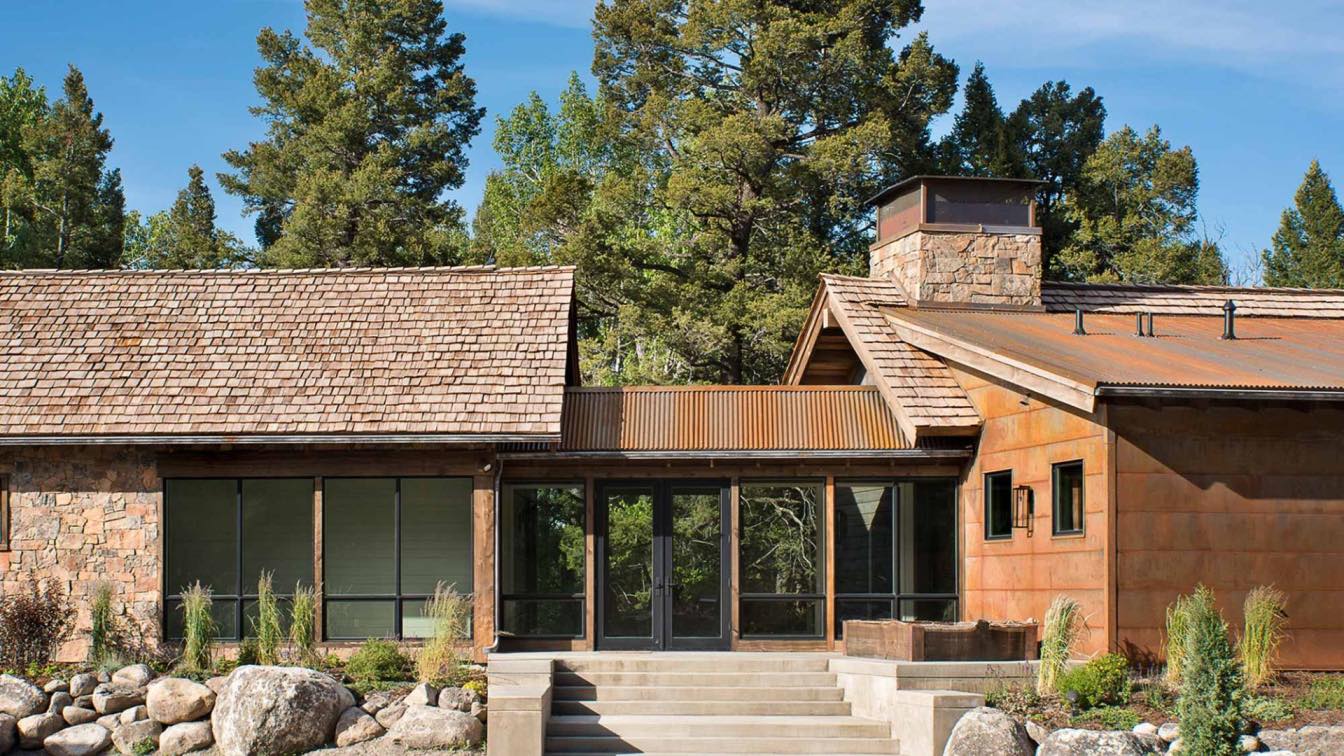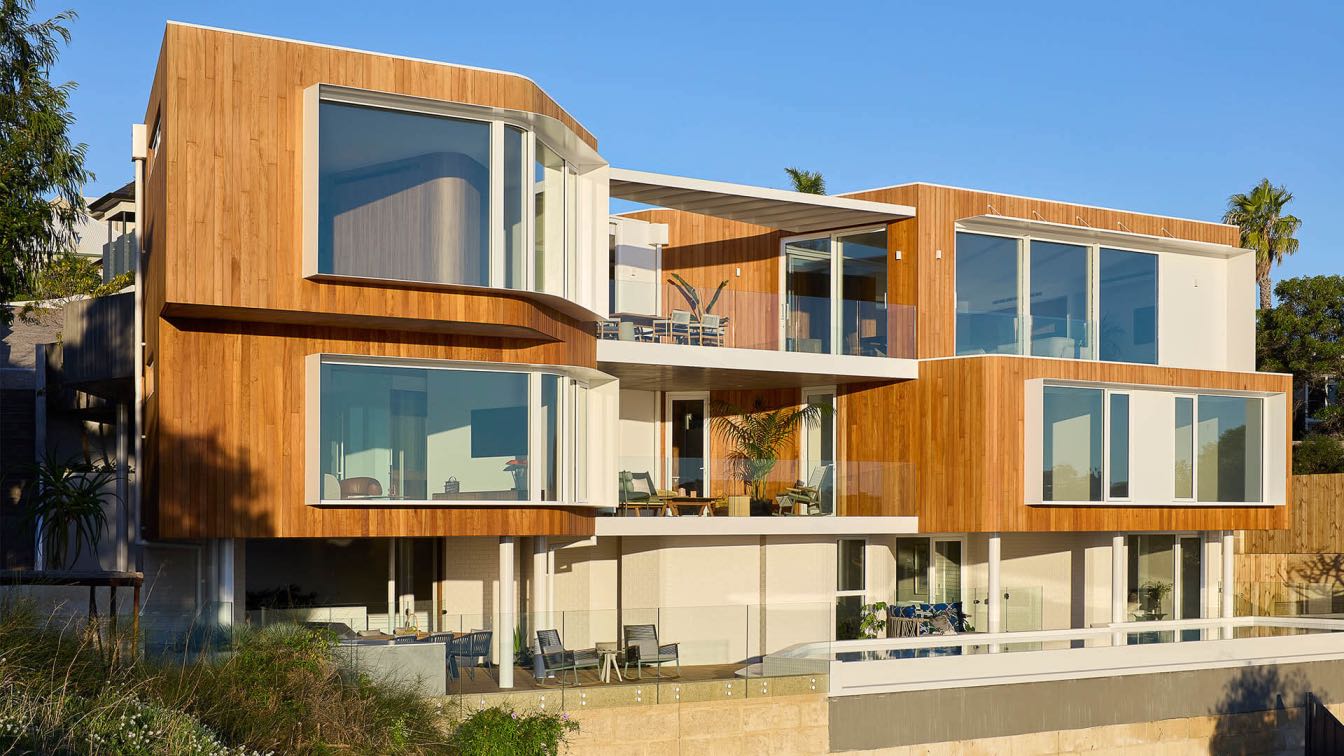Moldovan leading architecture practice LH47 ARCH has completed Hobbit Wake Houses, a trio of small, earth-sheltered rental cabins built within the country’s first wake park, near the village of Panăşești and just 20 minutes from Chişinău. Positioned on a quiet, previously unused lakeside stretch, the project transforms overlooked land into a secluded retreat where architecture blends seamlessly into the landscape.
The cabins draw inspiration from the mythic image of hobbit dwellings. Each structure is partly buried in the ground and topped with a green roof, so that the forms read as gentle landforms rather than conventional buildings. This earth-sheltering approach improves thermal stability, reduces energy loss and visually restores the terrain. Domed profiles strengthen the sense of protection, while panoramic glazing opens each cabin towards the water.
At the heart of the project is an investigation of nearly forgotten rural techniques. Instead of synthetic insulation, the walls are packed with straw bales — once widespread in Moldova’s villages — and finished with layers of clay-and-straw plaster, protected with a lime wash. Simple as they appear, these methods create a self-regulating microclimate: the clay absorbs excess humidity and releases it when the air becomes dry, while straw naturally provides insulation.

The timber frames, crafted by local specialists, further reduce the carbon footprint compared to steel or concrete. Roofs are layered with soil and fixed in place using a mesh system designed by LH47, so grasses gradually colonise the surfaces and return the cabins to the landscape as living mounds.
“During the construction we faced a number of challenges that required creative problem-solving,” says Serghei Mirza, founder of LH47. “Working with clay, straw and wooden frames meant relying on knowledge that isn’t widely used anymore. Some details had to be adapted on site to make them stronger and more practical. Floors and foundations were prefabricated in sections and assembled outdoors, which simplified construction but demanded precise coordination. The green roofs were the most ambitious element — we developed special nets to hold the soil so that over time the grass will grow, allowing the houses to fully blend into the natural environment.”
Inside, the celebration of craft continues. Beds, kitchens and timber fittings were hand-made by local workshop Lemnaria, while ceramic artist Eugenia Burlacenco created bespoke lighting and decorative details. No two interiors are identical: variations in mirrors, shelves or kitchen furniture recall the improvisational quality of vernacular craft and ensure a sense of individuality in each cabin. From the outside, Hobbit Wake Houses almost disappear into the terrain; from the inside, they feel protective, warm yet open to nature. For LH47, the project is both an architectural experiment and a cultural statement: demonstrating how heritage craft, low-tech methods and ecological principles can converge into a new model of contemporary small-scale living.


























-(1).jpg)
